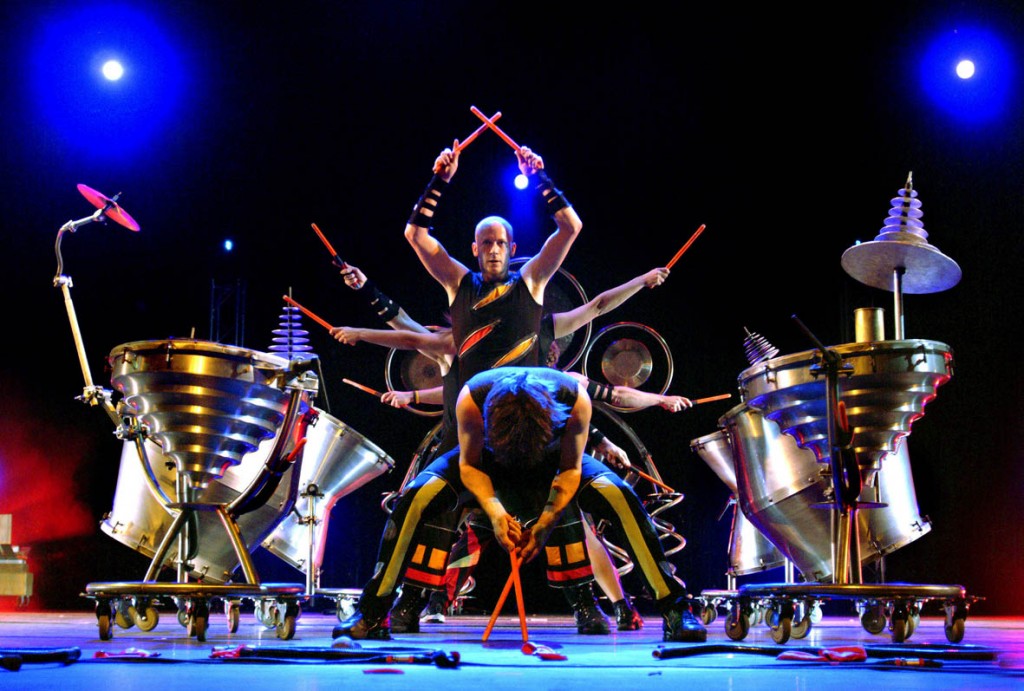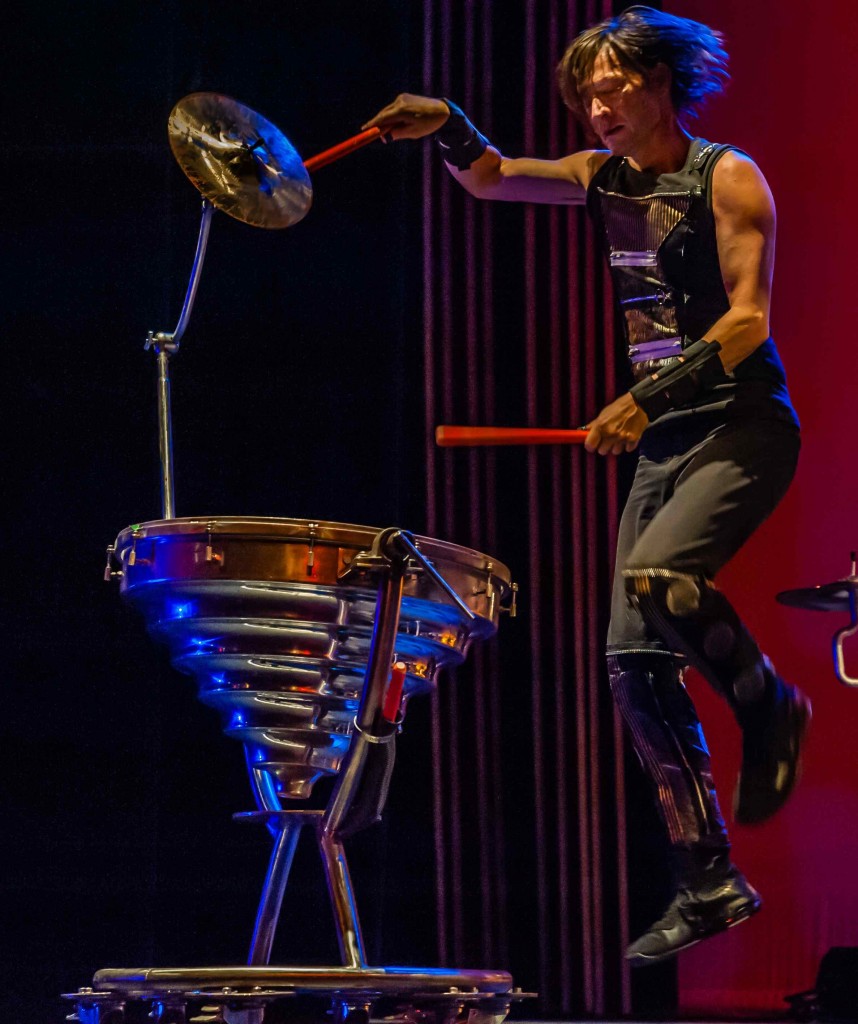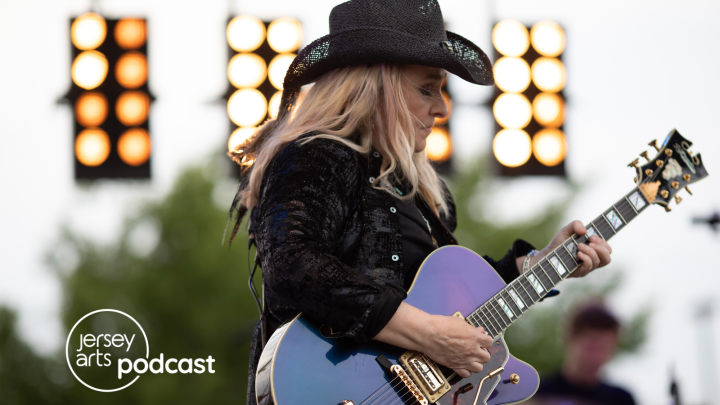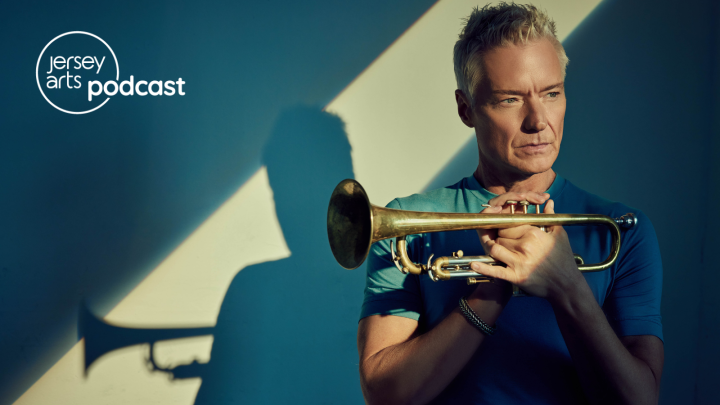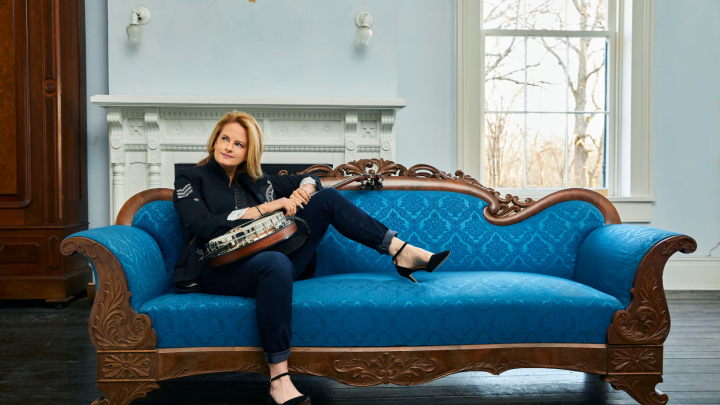Scrap Arts Music: High-impact troupe brings one-of-a-kind experience to State Theatre

Gregory Kozak’s first instrument wasn’t a guitar. It wasn’t a saxophone or even a tambourine. It was a contraption he constructed himself — using hubcaps and the rain gutters of his family’s home in Canada.
“The rain would come dripping out and hit the strategically placed hubcaps,” recalled Kozak, who was a 7-year-old growing up in Ontario at the time. “They had this wonderful pinging sound. I just would move the hubcaps around to various parts of my mom’s petunias under the rain gutters. It was just enchanting.”
And somehow, it launched a career.
These days, Kozak travels the world with Scrap Arts Music, a troupe he co-founded with partner Justine Murdy, in which musicians create striking sounds on homemade instruments constructed from objects you might usually find at construction sites and warehouses: giant steel containers, plastic tubes, artillery shells, metal spirals that look like hats the members of Devo would have worn in 1982.
They bring the show to New Jersey next Friday, March 27, at 8 p.m. at the State Theatre in New Brunswick.
The Vancouver-based group has been called a cross between Dr. Seuss and Mad Max — a description that Kozak understands.
“There’s a sense of invention about the whole thing, and Dr. Seuss was about invention,” he explains. “And we tend to like materials used by human beings that are cast away. There’s kind of a Mad Max aspect to it — the rebuilding of civilization. I’d add some Flash Gordon into that.
“It’s a unique pile of stuff,” he concludes. “The instruments don’t look like anything anybody has seen before, but they’re vaguely reminiscent of planet earth.”
Kozak has always taken a left-field approach to music. “Some kids really like visual things off the bat, some kids love to run fast, or do tricks on their bikes,” he says. “I just loved to hear things.”

Photo by Anneke Janissen
When he was in high school, Kozak gathered likeminded friends together and handed out instruments he signed out from school.
“I said, ‘I’m going to stand on top of this table, and I’ll point to you. Make noise.’” he remembers. “We’d take turns conducting and take turns on instruments. If you knew how to play the instruments, you were not allowed to play it.”
Soon, he met Murdy, an architect at the University of Waterloo.Kozak started composing music in college and realized he didn’t want to be a traditional professional musician. “I could make a living playing in country or rock or blues or jazz bands, but this music was my baby,” he explains.
“We just clicked,” Kozak says. “Her architectural sensibility, her rigor, her sense of design were just amazing. She was very interested in beauty and structure. We had a real common ground right away.”
Murdy started making observations about how architecture could work in music. And in the late 1990s, she and Kozak launched Scrap Arts Music. Their debut show was scheduled for Sept. 11, 2001 in Philadelphia.
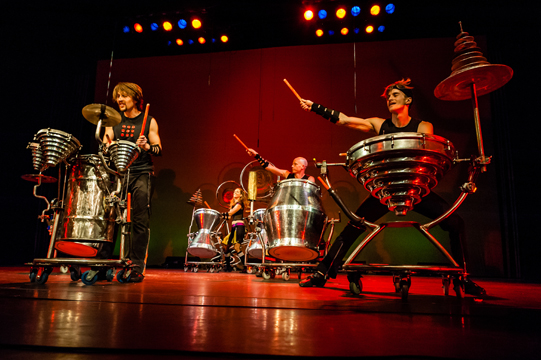
Photo by Anneke Janissen
“As we crossed border, I saw a sign saying Manhattan closed,” Kozak recalls. “We showed up just in time to watch television screens. It was a somber moment.”
They didn’t perform for several days, but they ended up touring the U.S. “It was amazing to play in that time,” Kozak says. “Because we are all about positivity — looking for other ways to do things.”
A Scrap Arts show features a handful of musicians playing about 150 instruments made from found objects. Kozak composes the music, while Murdy helps design the instruments and oversees the lighting and costumes. “Our look is a result of Justine’s vision,” Kozak says.
Many of the instruments are very large, but they’re all mobile. “We’re all about transformation,” Kozak explains. “Even our costumes transform. They slowly evolve as the show evolves.”
It takes three hours to set up the show’s 4,000 pounds of equipment and two hours to break it down. “All of our musicians have to learn how to use tools, as well,” Kozak notes.

Photo by Anneke Janissen
The objects that make the best instruments, he says, are hollow or tubular. “Anything that contains air in it already has a sound source,” Kozak says. “If something doesn’t make a sound right away, it’s a lot of fun to try to make a sound. I could make a car door sound fantastic.”
And part of the show’s inspiration is Vancouver itself — a city nestled in the mountains of Canada’s west coast that saw a construction boom in the ’90s.
“If there’s a place that’s a Transformer toy made into a city, it’s Vancouver,” Kozak says. “It’s all new gleaming, beautiful pristine structures. There’s just a lot of frontier there that got built and rebuilt very quickly. It helped me to open up my sense of vision. I took things from marine ballasts, from construction sites. My instruments are built from that city.”
Kozak’s ultimate hope is that Scrap Arts’ shows appeal to children with the kind of curiosity he had growing up.
“Kids go up to me after the show and say, ‘I want to make one of those,’” he says. “Those are the people I’m targeting — families and kids. I’m saying, ‘Take this object here, put it into your universe, and have fun with it.’”

